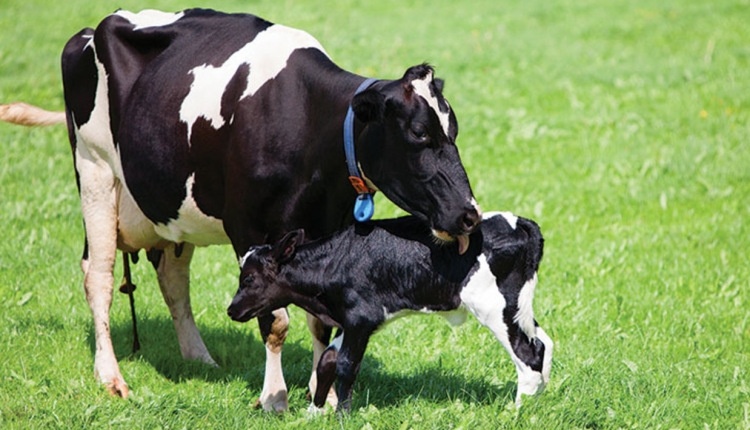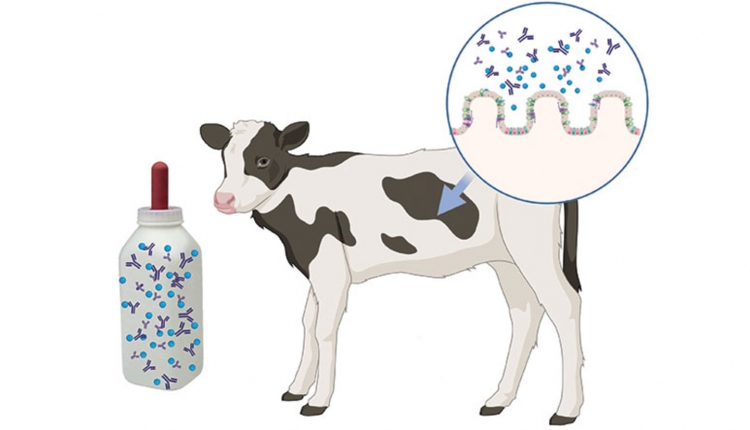Quaassdorff is a dairy management specialist for Cornell Cooperative Extension and Drwencke is a Ph.D. student at the University of California, Davis.

Scours is one of the most common calfhood illnesses, and it remains a widespread issue on farms. According to the Dairy Calf and Heifer Association’s Gold Standards, farms should aim for less than 15% of preweaned calves experiencing a case of diarrhea that requires 24 hours or more of treatment. However, nationwide reports show average rates are higher than that, from 21.4% to 29%, highlighting an opportunity for improvement.
Farms should work with their veterinarian to determine the best prevention and treatment for scours on an individual farm basis. When looking to improve scours management, it is important to determine the type of scours and prevalence in your herd.
Identifying the specific age in days or weeks of a scouring preweaned calf can give you important insight to the type or cause. There are some common routes of exposure that align with age, so pairing this information with troubleshooting can help you identify the common cause of scours on your farm.
Only treat when needed
Minimizing the prevalence of scours can improve profitability by reducing treatment costs, and it sets your herd up for success. Improving the health and welfare of preweaned calves by controlling diseases, like scours, also promotes the well-being of the employees who manage and care for them.
Reducing the need to treat scours can also strengthen antibiotic stewardship. Recent work from Cornell Cooperative Extension in northern New York suggests that many cases of scours are not caused by bacteria, but rather nutrition, viruses, or protozoa, making treatments with antibiotics ineffective.
For these cases, producers should focus on hydration and supportive care as the best treatment. To prevent any future cases, cleanliness needs to be a top priority, as well as working with your veterinarian to develop proper vaccination protocols.
Watch for nutritional factors
Scours is more than just loose manure. What some may call “nutritional scours” can simply be loose manure related to a higher plane of nutrition and intensive feeding practices. Calves fed a high level (10 or more liters per day) of safe, clean, and properly mixed whole milk or milk replacer may exhibit loose manure, but this is not concerning. Nutritional scours becomes a concern when it is caused by an incorrectly diluted or poorly mixed milk replacer, or from low-quality milk replacer that prevents proper nutrient absorption. This can result in calves with a faster rate of passage or upsets and imbalances in the digestive system, leading to scouring and dehydration.
To prevent nutritional scours, start with clean milk. Whole milk that was improperly pasteurized or cooled will grow high levels of bacteria that can result in scours. If feeding milk replacer, choose one that includes high-quality ingredients and appropriate amounts of lactose.
Lactose, the sugar in milk, is a source of energy, but it also acts as a natural laxative for calves by pulling water into the intestine. Excessive lactose levels in milk replacer cause an acidic gut environment, damage to the intestinal lining, and poor nutrient absorption.
Osmolality is the concentration of dissolved particles in a fluid, or could also be considered the “sugariness and saltiness” of milk. Whole milk is typically 280 to 290 milliosmoles per liter, but some milk replacers can reach 400-plus particles per liter (mOsm/L), which slows passage rate in the abomasum and leads to bloat.
Osmolality can also be elevated in whole milk from cows with a mastitis infection or high somatic cell count. Proper mixing of milk replacer and access to clean water can help calves self-regulate and maintain a healthy gut.
Feeding the correct percent solids in milk or milk replacer is also important for avoiding nutritional scours. Cow’s milk is naturally around 12.5% solids, with the goal being 12% to 15% when feeding milk replacers. Gut upset may occur at higher levels of solids. Inconsistency of percent solids in milk replacer or whole milk is one of the common reasons why calves develop nutritional scours. Even a 1% change in total solids is enough to cause digestive upset in calves.
To ensure consistency, use a scale to weigh out milk replacer powder and water before mixing and to measure the percent solids with a Brix refractometer. Check with your nutritionist for the ideal Brix reading associated with your milk replacer, as they can vary.
Temperature also matters when mixing milk replacer or incorporating additives into whole milk. Incorrect mixing temperatures could cause the mix to separate, leaving expensive and important nutrients in the bottom of the pail. To minimize scours, milk should also be fed at or slightly above calf body temperature, which is 102.5°F.
Other forms of scours
Calves can also experience pathogenic scours caused by bacteria, viruses, or protozoa, which make up about 95% of cases in animals under 3 weeks of age. While all calves encounter pathogens, keeping the exposure as low as possible will help prevent scouring. Bacterial scours is often a result of dirty environments, and includes cases caused by E. coli, salmonella, and clostridia.
If a calf exhibits watery scours within the first 2 to 4 days of life, it is almost always from an E. coli source that got into their mouth, like manure. Viral causes of scours are often rotavirus and coronavirus, which affect the calf’s digestive system, making it difficult to absorb water or nutrients. These are common at 7 days of age and can be a problem up to 21 days.
Protozoal scours is often caused by Cryptosporidium or Coccidia. Due to its life cycle, Coccidiosis typically occurs after 3 weeks of age, and it commonly looks like dark gray scours that stick to the tail.
Protozoa can be challenging to manage as they remain in the environment for long time periods. These infections cause severe pain, reduced nutrient absorption, and lasting damage to the intestine. To prevent pathogenic scours, it is essential to maintain a clean maternity pen, feeding equipment, transportation devices, and calf housing area.
Ensuring a calf receives adequate amounts of clean, high-quality colostrum in a timely manner also helps prevent issues with scours in the first few weeks of life. Reducing overall stress caused by travel, weaning, and so forth is an additional component in scour prevention.
Improving scours management is beneficial to the health and welfare of calves. It also benefits the people caring for them. When faced with scours challenges on farm, the first step should be to identify the cause. This is an opportunity to treat properly and effectively, leading to improved antibiotic stewardship and farm profitability. Farms should also work with their veterinarian to decide on proper treatment and prevention, focusing on hydration, nutrition, and cleanliness.








